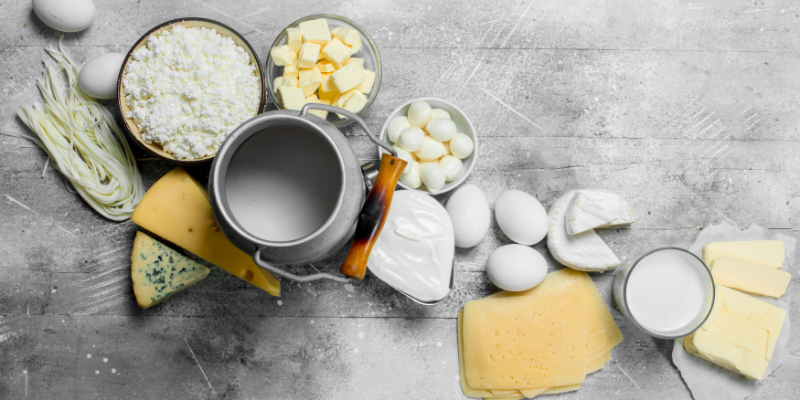Hydrogen Peroxide and the Food Industry
By Andrei Victorov

Hydrogen peroxide, also referred to hydrogen dioxide, is a molecule consisting of two hydrogen and two oxygen atoms that can occur naturally in the air. The chemical is a colorless liquid at room temperature with a bitter taste. While there are several methods to produce hydrogen peroxide, the chemical is typically manufactured through a synthesis known as the anthraquinone process. The process is based on the cyclical reduction and oxidation of an alkylated anthraquinone. Hydrogen peroxide is normally encountered in local pharmacies or convenient stores as antiseptic labeled brown bottles at a concentration of 3%. This solution may be used on skin to prevent infection of minor cuts, scrapes, or burns; however, recent publications have advised against it due to the potential harm it may cause. The oxidizing properties of hydrogen peroxide creates free radicals which leads to oxidative damage to proteins and membrane lipids. This may deactivate and destroy pathogens and may prevent spreading of infection. These characteristics allow for hydrogen peroxide to be used in the food industry for antimicrobial and disinfecting solutions. As an antimicrobial agent, hydrogen peroxide can be used to preserve food by preventing growth of microorganisms and subsequent spoilage. 
Hydrogen Peroxide Use in Food
In 1986, The Food and Drug Administration affirmed that hydrogen peroxide is generally recognized as safe (GRAS) as a direct component of food. The code of federal regulations have set some guidance into treating food with hydrogen peroxide and the use for each. In the dairy industry, milk, whey, and dried eggs can be treated with small levels of hydrogen peroxide as an antimicrobial, oxidizing, and reducing agent. Hydrogen peroxide can be used as a bleaching agent for emulsifiers, instant teas, cheese whey, beef feet, and tripe. This allows hydrogen peroxide to adjust the color of food products and increase whiteness. Hydrogen peroxide can further be used to reduce sulfur dioxide levels in finished corn syrups as well as remove sulfur dioxide from the starch slurry following corn refining. Once food items are treated, hydrogen peroxide would be removed by appropriate physical or chemical means during the processing of the food. In order for hydrogen peroxide to be used in food processing, it must meet the specifications of the Food Chemicals Codex (FCC) 21 CFR 184.1366(b). The codex has requirements for acid, arsenic, heavy metals, iron, phosphate, dry residue, and tin to be below a certain percentage. There are several benefits for using hydrogen peroxide in food applications. First, excess solution will decompose into oxygen and water in processing stages, leading to no toxic residue. If there is leftover residue, detection can be easily achieved through analytical testing or utilizing test strips. Second, the solubility of hydrogen peroxide with water makes it easy to handle. Diluting hydrogen peroxide to a desired concentration can be quickly achieved and processing techniques such as spraying, wiping, or dipping can be easily handled. Lastly, hydrogen peroxide is effective in bleaching and sanitizing food products due to its ability to produce radicals while also being an environmentally compatible chemical. Resources:- Campos-Martin, J.M., Blanco-Brieva, G. and Fierro, J.L.G. (2006), Hydrogen Peroxide Synthesis: An Outlook beyond the Anthraquinone Process. Angewandte Chemie International Edition, 45: 6962-6984. https://doi.org/10.1002/anie.200503779
- https://pubchem.ncbi.nlm.nih.gov/compound/Hydrogen-peroxide
- 1366
- 3
- Food Processing with Hydrogen Peroxide
- ATSDR – Hydrogen Peroxide
